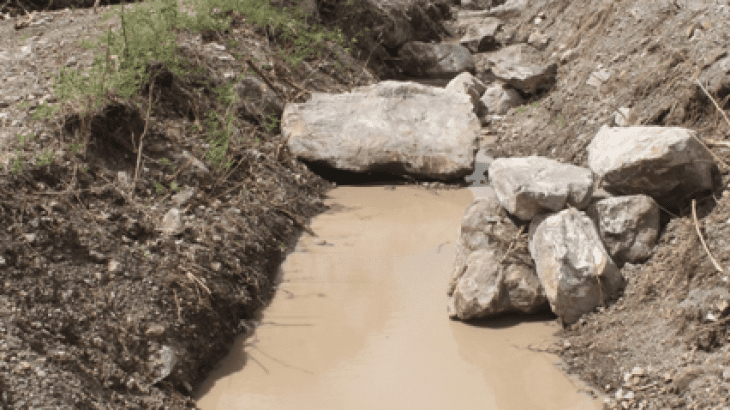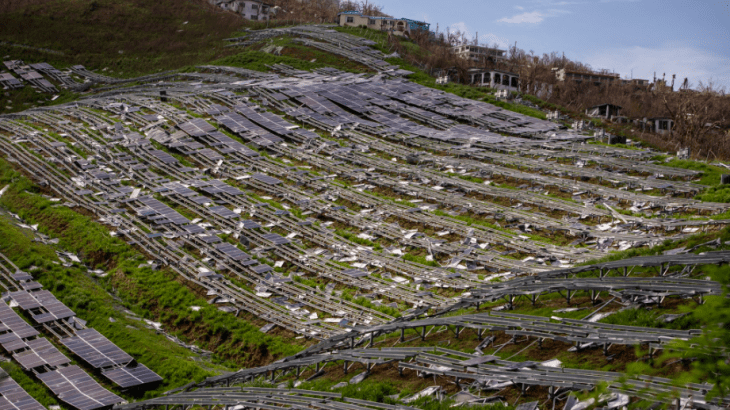A complete picture of the Caribbean post-Irma and Maria is still yet to emerge. Some islands are still engaged in what looks a lot like battlefield triage. As we await the final reckoning, it is no exaggeration to say that some islands, including Puerto Rico, Dominica and Barbuda, have been decimated. Insured losses for Maria alone are estimated to be as much as $85 billion. And the number keeps rising. On some islands, rebuilding will take not months, but years.
Damage to power infrastructure is widespread. Regional utilities, coordinated by CARILEC, mobilized swiftly to support each other and the lights are back on across several of the afflicted islands. Others are not so fortunate. In some areas of Puerto Rico the power is expected to be out for months. On Anguilla, 90% of the electricity grid is damaged. Barbuda’s entire electricity network is in ruins.
A coordinated response from the international community which reflects direction and leadership from Caribbean stakeholders is vital.
Where does the Caribbean go from here? At a national level, regional political leaders – already focused on rebuilding – relayed their priorities to the global community at UN headquarters last week. The Minister of Foreign Affairs for The Bahamas, Darren Henfield, spoke optimistically when he stated that his government will work with the private sector to build Ragged Island from destruction to the first fully green island in the region using renewable energy and smart technologies to create a “more sustainable, resilient, island community”.
The Prime Minister of Antigua and Barbuda, Gaston Browne, asserted at the same meeting that, “if these frequent and brutal storms are to be withstood” we’ll need to see investment in a new generation of resilient infrastructure. For this to happen, Browne identifies a need for international development and financial institutions to provide financing at concessionary rates without what he describes as “artificial impediments.” Show us the money, in short.
Money has already started flowing into the region for immediate needs. The development banks – among them the Caribbean Development Bank (CDB), the Inter-American Development Bank (IDB) and The World Bank Group – have already mobilized and are deploying funds to relief and reconstruction. Private and foundation donors are also playing a role in funding both relief – and rebuilding. Sir Richard Branson, for one, is said to be creating a fund for clean energy.
Renewable energy advocates are champing at the bit, too, seizing the opportunity to encourage the Caribbean to build smarter, cleaner – and more resilient – power systems. In a recent article, Rocky Mountain Institute echoed the views of many when they wrote that the “tragedy of Hurricane Irma can be a catalyst to transform destruction into opportunity – an opportunity to build back better and cleaner.”
But let’s be clear: the idea of resilience isn’t new to the Caribbean. These aren’t the first hurricanes to hit the region. Resilience has been baked into utility planning for decades. What’s also clear is that the conversation around resilience has changed. Call it climate change, call it what you will, the magnitude of these back-to-back storms was shocking. But not, now, anomalous: we, all of us, expect there to be more.
So what does this mean for the planning and procurement of electricity infrastructure in the Caribbean? The emergence of less centralized systems powered by microgrids? Adherence to (and enforcement of) more stringent construction codes? Power lines buried underground or even undersea to connect islands? What’s clear is that there is no single silver bullet; resiliency is the sum of many parts.
What’s also clear is that utilities have businesses to run and difficult choices ahead. For those utilities hardest hit, how do they get the lights back on as swiftly and economically as possible? Then further out, how do they map out investment in power systems which have a better chance of survival in the face of extreme weather events? Balancing the deployment of capital and systems to those two not necessarily complementary needs will be an extraordinary challenge for regional energy leaders.
As they square up to these generational challenges, those same leaders have a vast pool of donors to call on. This is both a blessing and a curse. Analyzing and responding to myriad offers of assistance requires capacity; there is, simply, no capacity to spare on those islands which were hit hardest by Irma and Maria. A coordinated response from the international community which reflects direction and leadership from Caribbean stakeholders is a vital part of this process.
Out of the decimation of Irma and Maria, a stronger and more resilient regional power network may take its place. It will only emerge, however, if out of today’s triage emerges a rapid – but patient – response which harnesses international capital and expertise to the needs of the region.


